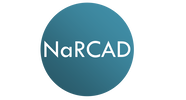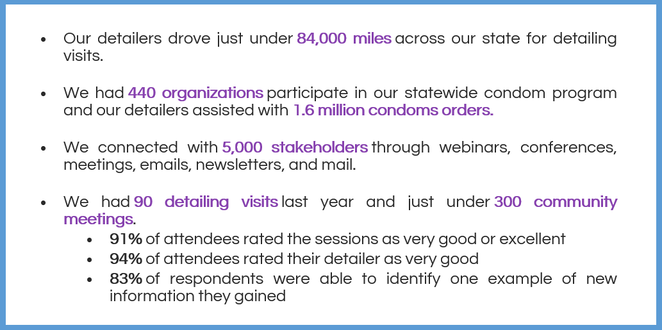|
Curated by: Aanchal Gupta, Program Coordinator, NaRCAD Tags: ADvice, Rural AD Programs Academic detailing programs face unique challenges in both rural and urban communities. Rural communities often encounter barriers with both clinicians and their patients having limited access to resources, as well as the difficulty they both face in navigating geographic barriers. In the latest edition of the AD-vice blog, we’ll explore past conversations with public health and healthcare professionals working to close the gaps for patients in rural populations.  CAPACITY-BUILDING & RESOURCE SUPPORT
 COLLABORATION AND COMMUNITY SUPPORT
 ADDRESSING STIGMA AND HEALTHCARE ACCESS
We hope the insights shared in this edition of AD-vice will inspire implementation of strategies on community support, access, and more in your AD programs. Check out our updated Program Planning Hub for examples and guides on how to build and sustain detailing programs as well as resources to support frontline clinicians!
Best, The NaRCAD Team Have thoughts on our DETAILS Blog posts? You can head on over to our Discussion Forum to continue the conversation! By Anna Morgan-Barsamian, MPH, RN, PMP, Senior Manager, Training & Education, NaRCAD An interview with Lexie Hach, Regional Health Specialist, Bureau of HIV, STD, and Hepatitis, Capacity Extension Program, Iowa Department of Public Health. Tags: Detailing Visits, Evidence-Based Medicine, Stigma, Rural AD Program  Anna: Hi, Lexie! We’re excited to chat with you today about your detailing work in rural Iowa. Your program started about 5 years ago and was born out of the HIV and Hepatitis Community Planning Group (CPG). Can you share more about the CPG and how the detailing program was created? Lexie: The CPG is made up of healthcare providers, people with lived experience, case managers, educators, and other stakeholders. The group serves in an advisory capacity to the Bureau of HIV, STD, and Hepatitis at the Iowa Department of Public Health (IDPH) and their main task is to ensure that the state has an inclusive participatory planning and evaluation process for the delivery of prevention and care services. About 5 years ago, the CPG recognized a need for more education in the rural parts of Iowa related to best practices in HIV, sexually transmitted infections (STIs), and Hepatitis. That’s when we learned about AD. We started building our detailing program based on a lot of the work that New York City’s program was doing. We now have 5 detailers, who we call Regional Health Specialists (RHS).  Anna: What an interesting start to your program! You’re currently assigned to detail in 15 counties in central Iowa covering over 20 sexual health topics, from stigma to your statewide condom program to new screening recommendations. Do you detail on these topics beyond the primary care setting? Lexie: Yes! Our goal as detailers is to provide the best health outcomes for people living with HIV and those living with, or at risk for, STIs and Hepatitis C. We meet with the medical community including, local health departments, community-based corrections, substance use specialties, mental health, and many community based organizations. We also attend a variety of community meetings. We know that many people living with HIV pass through community-based organizations. We want to make sure that those organizations are equipped with the correct information to get people the care they need through resources or referrals. Our team has created detailing materials for both medical professionals and community-based organizations to maximize our impact. Anna: Working with community-based organizations is a great way to make sure people have access to the best possible prevention and care, especially in a rural state like Iowa. How does Iowa’s geography impact your detailing work?  Lexie: Iowa has 3.1 million people with about 54 people per square mile. Our state is 85% farmland with country roads, winter weather, and a lot of construction. It is not uncommon to lose cell service or your GPS signal while driving in the very rural parts of Iowa. We’ve adapted our detailing approach because of this and have found that group sessions work best for us. We identify champions in the clinics and are then able to set up 1:1 visits with clinicians as needed. Anna: We often hear from programs that group detailing is a great way to get your foot in the door and spread the word about AD. It’s nice to know that it’s working so well for your program too! I imagine Iowa’s geography also impacts patient care. Lexie: Yes, it does. There can be stigma around seeking sexual health care in rural parts of Iowa. Many times, patients know someone working at the clinic in their town. It’s common for patients to travel long distances to get to a clinic where they don’t know anyone. It’s also common for patients to have to travel over 2 hours to access HIV care at a specialty clinic. Anna: And that’s 2 hours one way! Has your program been able help with increasing access to care? Lexie: Yes, I can share one story that stands out the most to me. A couple of years ago, I was presenting at a community meeting with 15 or so people in attendance. The CEO of a federally qualified health center (FQHC) in Southern Iowa was also present and we were able to connect and network afterwards. We talked about how far patients must travel for Ryan White HIV care and he saw a need that the community health center could fill. We connected with senior leadership, there were additional meetings, and together we were able to bring Ryan White HIV care services to the health center. Those services are still there today and now people living with HIV in Southern Iowa can access Ryan White services closer to home. Anna: There is so much to be said about the power of AD, networking, and champions! Let’s wrap up with hearing about some of your program’s successes from this past year. Lexie: We’re so proud of all that we’ve accomplished this year! Here are some highlights: Anna: Those are some impressive numbers across both the clinical and community settings. Thank you for letting us feature your detailing work and learn more about the impact your team is making in your state! Have thoughts on our DETAILS Blog posts? You can head on over to our Discussion Forum to continue the conversation!  Biography. Lexie Hach holds an Associate Degree in Nursing, Bachelor of Arts degree in Health Promotion and Women’s Health, and a Master of Arts degree in Community Health Education. Lexie is currently a Doctoral student in Public Health (DrPH) with an Epidemiology concentration at the University of Nebraska Medical Center (UNMC). Lexie has held positions in nursing, health education, public health, and healthcare marketing. Lexie has been with the Bureau of HIV, STD, and Hepatitis Capacity Extension Program at the Iowa Department of Public Health for over five years as a Regional Health Specialist (RHS). Lexie was previously with the bureau as a Disease Intervention Specialist (DIS). Lexie was instrumental in developing and implementing the RHS program in Iowa’s rural communities. In her RHS (academic detailing) role, Lexie educated a variety of different stakeholders on best practices related to HIV, STIs, and Hepatitis in central Iowa. Lexie has helped support the Sexually Transmitted Disease (STD) Program as a DIS due to COVID-19 and also helped as a COVID-19 contact tracer. Lexie was the previous workforce health department co-chair for Iowa’s statewide strategic plan to stop HIV in Iowa (Stop HIV Iowa). Lexie recently returned to her roots in the STD program and now serves as an Integrated DIS and Special Projects Coordinator, but continues to work alongside her fellow RHS colleagues. Leveraging Relationships: New Mexico’s Approach to Team Building, Networking, & Gaining Access6/15/2021
An interview with Alisha Herrick, MPH, CHES, Program Manager and Detailer at the Center for Health Innovation (CHI). Alisha manages the academic detailing program, Understanding Provider Demands and Advancing Timely Evidence in New Mexico (UPDATE NM) at CHI. by Anna Morgan, MPH, RN, PMP, NaRCAD Program Manager Tags: Detailing Visits, Rural AD Programs  Center for Health Innovation https://chi-phi.org/ Center for Health Innovation https://chi-phi.org/ Anna: Hi, Alisha! Thanks so much for joining us on DETAILS today. We’re excited to chat with you about UPDATE New Mexico and the tips you have for building relationships. Can you tell us a bit about your program? Alisha: Absolutely! We provide evidence-based information and recommendations around chronic non-cancer pain management. We’re expanding the service to include information on medications for opioid use disorder so healthcare professionals can better serve their patients in our rural state of New Mexico. We offer rural healthcare providers, who may feel somewhat isolated, an opportunity for continuing education that typically might only be available in bigger cities. Anna: It’s wonderful that your team offers these resources – we know that there are often limited resources in rural areas. Detailing in rural areas also brings up additional challenges for the detailing team, but you do such a great job keeping your team engaged and feeling connected. Can you tell us a little about your team and the recruitment process?  Alisha: Geographically, New Mexico is the fifth-largest state in the country, but we only have 2 million people living here. All we do is network, network, and network. Whenever we're looking for detailers, we use our existing networks to talk to people and spread the word. Many people have heard the term six degrees of separation, but here in New Mexico, there’s only about two or three degrees of separation. Word travels fast when we share job opportunities with our partners. In terms of resources we’ve used for recruitment, we’ve adapted the generic job description on the NaRCAD website and circulated that throughout our network. The detailers we’ve hired all hail from different backgrounds, disciplines, and parts of the state. However, we make sure that they have a few common attributes – excellent communication skills, the time and resources needed to devote to the program, and the ability to share their perspective with others on the team. Anna: Along with recruitment, you’ve also put a lot of work into building your team. Can you share one of your approaches for building a strong and effective team? Alisha: One of the ways we keep our team engaged is through monthly meetings. Because of the diverse backgrounds of our detailers, there’s always a rich exchange of ideas and perspectives when we convene. We also invite our clinical support team so that the detailers have a chance to discuss the clinical content with experts. We connect, troubleshoot, and share insights - our entire team looks forward to these meetings.  UPDATE NM https://www.youtube.com/watch?v=IqMvWirUJxQ UPDATE NM https://www.youtube.com/watch?v=IqMvWirUJxQ Anna: Creating a space to share and exchange with peers is key, especially for such a unique job like detailing. Your team also recently worked together to create a commercial to help get the word out about academic detailing and continue to build relationships with the larger community. What was that process like? Alisha: Once the COVID-19 pandemic began, we knew we had to have another venue to capture our audience's attention in the virtual world and continue to spread the word about our academic detailing service. Near the end of 2020, we met with a couple of different video production agencies to learn more about creating a commercial and the resources required to make it come to life. We reallocated some marketing funds and picked a production team. We shared our vision of what we wanted to accomplish, outlined a few ideas, and they helped us refine a script. The fun part was putting together a cast. The detailer is played by one of our own detailers, the doctor is played by one of our clinical support team members, the patient is played by my fiancé, and the clinical staff member is played by our program coordinator. We didn't have to pay for our cast, which helped us cut down on cost; however, we did have to hire a dog for the commercial since I couldn’t bring my own due to the distance to the filming location! Overall, I’m very pleased with how it turned out.  Anna: You should be – it’s so well done. What other approaches have you taken to gain access to clinicians or get the word out about academic detailing? Alisha: Relationships are key in New Mexico, as they are in every other place. We have partner organizations working in the community on overdose prevention who have been tasked to prioritize marketing our detailing service to clinicians. We also met with our medical board and asked them if our service could qualify as a mechanism for healthcare providers to receive their required pain management CME. They supported our request and that ended up being a huge win for our program. In addition to being detailed, clinicians can also get free CMEs. On the marketing side of things, we've tried just about everything over the last year since we expanded statewide - postcards and flyers, newsletters, webinars, and social media. We’re now working on trying some more targeted approaches, like Google Advertisements. For example, if a provider is googling "free pain management CME in New Mexico," our program might pop to the top of the list. Anna: It’s clear that you’ve used approaches that align with your goal of building strong relationships throughout your state – I can’t wait to hear how your new approaches have worked next time we chat. Let’s pivot to our final question to wrap up today. What is one piece of advice you'd give other programs that are looking to replicate your program's success? Alisha: I would say don't get discouraged if you don’t see as much demand as you would hope for when you’re first starting out. Like everything else, it takes time. It takes time to educate providers on what and how this service is being offered. It also takes time to alleviate some of those misconceptions that this is “just too good to be true”. So be patient, talk to people, and listen twice as much as you talk to build those relationships. Anna: Thank you so much for sharing that, Alisha. It’s an honor to work and learn from you and your team. We appreciate all the tips you shared today an we hope to catch up with you soon! Have thoughts on our DETAILS Blog posts? You can head on over to our Discussion Forum to continue the conversation!  Biography. Alisha believes that communities should be engaged in developing solutions and driving decisions that affect them. Having lived in New Mexico for eight years, she deeply values the strengths, resiliency, and beauty of New Mexico’s communities. Alisha has facilitated CHI’s leadership team since its inception and together, they continue to challenge the status quo by creating an environment in which social and health conditions allow individuals, families and communities to thrive. As a program manager at CHI, she supports opportunities for critical linkages across partners; promotes shared decision making, researches and implements innovative frameworks, and works to address social and racial inequities. Alisha manages UPDATE NM (Understanding Provider Demands and Advancing Timely Evidence), CHI’s academic detailing program; serves as PI for the HRSA RCORP (Rural Community Opioid Response Program) Implementation project and directs the organization’s Project ECHOs for systems change. Some of her past professional endeavors include health education, training and teaching medical interpretation, ESL and motivational interviewing. An interview with Liesa Jenkins, MA, the Executive Director of ONE Tennessee, an organization devoted to addressing the opioid overdose epidemic statewide. by Winnie Ho, Program Coordinator Tags: COVID 19, Detailing Visits, Opioid Safety, Program Management, Rural AD Programs, Substance Use  Winnie: Liesa, thank you so much for taking the time to speak with us today about your experiences at the helm of ONE Tennessee through the past year. Can you tell us a little bit more about yourself and the AD-related work that you do? Liesa: As the Executive Director of ONE Tennessee, I have overall responsibilities that include strategic planning, funding, communication, and staffing in addition to coordinating our AD program. I’m responsible for recruiting, training, and supporting our detailers to be as effective as possible. Our mission is to combat opioid misuse and overdose, and AD is just one of many projects and strategies we have to do that. W: You certainly wear many hats in your leadership role! Can you tell us about the experiences that have shaped how you approach leadership?  L: There were a very diverse set of experiences that influence how I’ve learned to lead. It’s also important to recognize that leadership comes in all forms. I was a foreign language teacher for 10 years, I had to learn the many different ways of communicating information to students from young teens to older adults. You learn to consider the way you present your information to help get all of your students to their goals. I was also a director of a non-profit and managed volunteers. Just like my students, you quickly learn that people have many different motivations. A good leader knows how to cater to those motivations and learns how to maximize the team they’re working with. It’s also important to always remember to express gratitude towards your team, and as often as possible, remind them of the impact that they’re making. W: You’ve discussed a lot of the soft skills and characteristics that good leaders have. What about some of the technical abilities that helped you be successful at managing an AD program?  L: Before coming to ONE Tennessee, I worked at both the federal and state-level in healthcare-related consulting work. It gave me exposure to federal and state-level funding procedures, as well as the decision-making process that goes on behind the scenes. You also learn about the regulations and guidelines that AD helps to keep clinicians aware of. W: It sounds like you’ve had a fantastic journey on your way to the position that you have now in leading an AD initiative. Can you tell us a little bit more about the different community organizations that support ONE Tennessee’s AD work? L: We have support from multiple organizations including the Tennessee Pharmacists Association, the Tennessee Hospital Association, and the Tennessee Primary Care Association. They’ve helped us recruit clinicians to serve as detailers and to participate in detailing sessions. We also have support from the East Tennessee State University’s College of Public Health and the Tennessee Department of Health supporting our data collection and program evaluation. We are thankful to other provider organizations including local community pharmacists and clinicians at Alliance Healthcare Services to assist us in development and distribution of materials  W: That’s quite a dynamic bunch! At the intersection of many different groups in the community all focused on preventing opioid-related overdose, how do you keep all these different stakeholders on the same page? L: Even when you speak the same common language, not everything is always communicated and understood as intended. I work with a talented team from diverse career backgrounds, including finance, legal, communications, and policy professionals. They don’t all speak the same exact “language” because of their professional backgrounds. The role I often play in group meetings is that of a facilitator. I'm comfortable asking the so-called “dumb questions” or constantly asking for explanations. As a leader, it’s my job to make sure there is clear understanding among the folks in the room who don’t work in that field. It’s important as a leader to not only communicate well, but to also make sure everyone on your team is communicating well enough so that everyone can understand and also be understood.  W: Intentional level setting is a hallmark of effective leadership and communication. It allows meetings and decisions to be productive, and it ensures that everyone’s goals are aligned. Otherwise, important details may get left behind or not fully developed. L: Exactly. It’s also important to know that with your team, you’re never alone. You don’t need to know everything to be a leader, but you need to surround yourself with people who can collectively make decisions based on good information. Surround yourself with people who know more than you do, and listen to them. W: You picked up this role in the middle of a pandemic and with your leadership, we were able to launch our first virtual training pilot with ONE Tennessee for about two dozen detailers. It was a huge undertaking! What would your advice be for someone who’s looking to tackle big projects in their role as the leader of an AD organization?  L: I would say first and foremost – the determination to fulfill our commitments was important to me. I knew what was in our contractual agreement with our funders, and didn’t want to start off our organization with a fail in this category! Secondly, create a timeline with the concrete things that need to be finished and the resources you need to help you monitor progress along the way. Finally, in the face of making new things happen – it can be daunting when there’s a big mission to accomplish. When there’s nothing on the drawing board yet, a leader is someone who volunteers to put up the first “strawman” plan. It doesn’t need to be perfect, but it gives everyone something to build off of; it’s always better to start with something, like the first brick in the foundation. W: We’ve talked a lot about how to bring a community together to support an AD intervention. Why is community involvement important to the success of an AD intervention?  L: Well, whether you’re talking about opioids or HIV or chronic illnesses, the reality is that no one individual or organization within a community can solve a public health problem alone. Even though AD is mostly about the relationship between the detailer and the clinicians they work with, it’s informed by many other people who care about improving health outcomes. In short, the program would not be able to operate without the leadership and support of these partners! In a state as large as Tennessee, with such wide differences among rural and urban, from the Appalachian region to the Mississippi Delta, racially diverse but largely homogeneous in some places, it is important that collaboration occur at local levels as well as at state levels—both among clinical colleagues in the same community who care for the same patients, and also with support from state-level organizations who can leverage resources that may not be available in the local community. While individuals and organizations may not agree on all points, it is usually possible to find at least one shared goal that can be worked on together. As an organization, we strive to identify and then mobilize to address those common goals. There are great things ahead for us all if we continue to work together. Have thoughts on our DETAILS Blog posts? You can head on over to our Discussion Forum to continue the conversation! 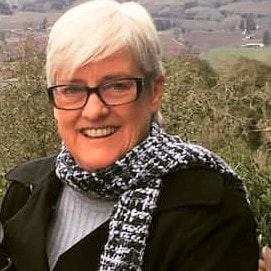 In her current role as Executive Director of ONE Tennessee, Liesa draws upon her experience as an educator, a non-profit administrator, a state-level director of community health programs and a consultant to state and federal officials, as she works to advance the organization's mission to combat the opioid epidemic through collaboration and sharing of information among health professionals and communities in Tennessee. In her professional roles at Kingsport Tomorrow, CareSpark, Deloitte Consulting and the Tennessee Department of Health, Liesa has helped to develop and implement a broad range of collaborative projects at local, regional, state and national levels to improve community health, broadband access, education and literacy, employment opportunities, cultural arts exchanges, global trade, environmental protection, neighborhood revitalization, youth development and civic leadership. Her skills in strategic planning, resource development, mentoring and community organizing have been recognized with awards, including being named a Paul Harris Fellow by Rotary International, a Health Care Hero by the Business Journal of Tri-Cities, and the Commissioner's Award of Excellence from the Tennessee Department of Health. Liesa received her B.A. in French from King University in Bristol, Tennessee and her M.A. from the University of Kentucky in Lexington, Kentucky. She also holds a Certificate of University Studies from the Université de Franche-Comté in Besançon, France, and is certified as a Project Management Professional by the Project Management Institute. Liesa is a native of Glade Spring, Virginia, where she is a seventh-generation resident on her family's farm, and enjoys spending time with her three sons and their families, as well as quilting, reading, and traveling. An interview with Ramona Shayegani, PharmD, Program Lead, Academic Detailing Service, Veterans Affairs Southern Nevada Healthcare System by Kristina Stefanini, NaRCAD Project Manager Tags: E-Detailing, International, Materials Development, Opioid Safety, Substance Use, Rural AD Programs  Kristina: Programs are transitioning their academic detailing (AD) efforts to e-Detailing or virtual detailing amid the COVID-19 pandemic. As part of your role at the Veterans Health Administration (VHA) Academic Detailing Service, you’ve completed e-Detailing visits, which you presented on at the NaRCAD 2019 conference. I wanted to interview you today, Ramona, to learn more about how you transitioned to e-Detailing. First, how did your program decide to do e-Detailing? Ramona: Thanks for interviewing me! We heard about an e-Detailing pilot project from our national office and we were excited to participate as our region is spread out and rural, covering Nevada, northern California, Hawaii, and Manilla, Philippines. We felt this would be an excellent setting in which to incorporate video calls into our communication with clinicians. As a result, e-Detailing has allowed us to reach our full potential as a service. Kristina: Amplifying a program’s impact and reach through e-Detailing is something many other programs want to experience. Have providers been receptive to e-Detailing visits given the current COVID-19 pandemic? Ramona: I think it varies by site, but for the most part, providers are very eager to learn about the VHA’s telehealth program. Initially, when we started e-Detailing, we launched a campaign to encourage clinicians to complete telehealth visits with patients. Now providers remember our names, and they reach out about setting up telehealth meetings with their patients and figuring out how to conduct video calls. It’s very rare for providers to reach out to academic detailers for help. We usually have to initiate outreach requests. Kristina: That’s terrific that clinicians are the ones reaching out for the service. When you’re getting ready for an e-Detailing visit, do you prepare the same way as you would for an in-person visit? What materials do you use, and how do you use them? 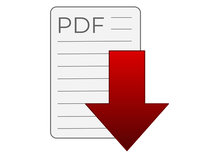 Ramona: The campaigns we’re working now are so fast-paced, so we’re sharing materials via PowerPoint presentations on a video conferencing platform; we also use electronic PDFs. In addition to showing providers electronic materials, you can still model an approach as you would in person by holding up some of the materials on the camera. For example, with naloxone education, we have naloxone spray “dummy” versions that I show providers on video; I ask if they have ever seen what a naloxone spray looks like, and whether they would be interested if I sent a model version, which they usually say yes to. Kristina: That’s something we try and tell detailers who are pivoting to e-Detailing, which is that much of the interactive approach of an in-person visit is still accessible via video! Many detailers who are trying this out for the first time are eager to find ways to build a meaningful, trusting relationship with clinicians--do you have any advice for strong relationship-building approaches during e-Detailing visits?  Ramona: Sometimes, especially if it’s a new provider, I try to remind myself that I might not get to talk about any of the key messages. It’s really important to take that time to introduce yourself and your service. I don’t feel like it’s anything different than meeting someone face-to-face for the first time. However, detailers need some time to try this with each other, their team, or providers that they have a good relationship with. Detailers need to build that confidence before they go out and try these video calls with people they’ve never spoken with. The more I do it, the more confident I feel, which is key in building these relationships. Kristina: That makes sense—it’s about comfort and confidence as much as knowing the evidence. We’ve also encouraged detailers to know that it may take more time to build up to delivering the key messages than you’d like it to, and to be patient and focus on building the relationship when carrying out visits online. In your experience, have you seen any drawbacks to e-Detailing? Ramona: One thing is that detailers don’t have the luxury of getting a feel of what the clinic is like, which would be easy to observe in person. A lot of times when I am in a clinic, I get a chance to talk to an auxiliary support team, or I could just walk to the other room and talk to the nurse. I’ve found ways to adapt to e-Detailing to try and have more of the team’s perspective; I’ll often ask providers if they think it would helpful for the nurse to be on the call so we can have a group discussion. Kristina: It’s really about thinking outside the box and adapting the in-person approach, while trying to maintain connection. Is there anything else you’d like to share from your experiences with implementing e-Detailing? Ramona: Detailers should acknowledge that this is a brand-new approach; you may not feel like this is your preferred way to talk to providers. Remember that it will take some time to get comfortable with it. There’s a learning curve. Now that I use this approach full-time, I just love it, and I don’t want to go back! It’s just as effective, a lot more efficient, and it allows you to be flexible. 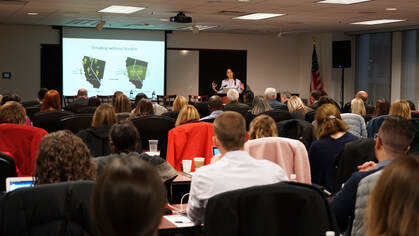 Biography. Ramona Shayegani is the program lead for VHA’s Academic Detailing service in northern California, Nevada, Hawaii and Manila. She received her Doctor of Pharmacy degree from Oregon State University in 2014 and has clinical background in mental health and addiction medicine. She was one of the first detailers to pilot e-Detailing at the VA and has completed over 400 virtual detailing visits. An interview with Megan DeNubila, Provider Relations Manager, and Jessica Alward, Academic Detailer, from the Bureau of Infectious Disease Control with the state of New Hampshire. Their mission is to improve public health by promoting evidence-based practices in the areas of infection prevention, screening, testing, and management for HIV, TB, STD/STIs, and Hepatitis. by Winnie Ho, Program Coordinator Tags: Detailing Visits, HIV/AIDS, Rural AD Programs, Sexual Health, Stigma 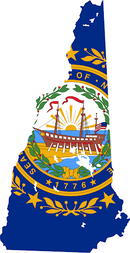 Winnie: Thank you both again for joining us today! In one of our past technical assistance discussions together, we’ve gone into depth about some common clinician stigma and barriers. In particular, you shared with us that because New Hampshire was a lower incidence state for HIV, you would encounter clinicians who felt that that particular issue didn’t really fall within their patient population. It’s a common barrier we hear from many detailing programs, whether they address opioid use disorder (OUD) or infectious diseases. Can you go into more depth about your experiences with this phenomenon, and how you’ve addressed it? Megan: Providers are extremely busy, and they’re often expected to be an expert on so many topics. Our program helps bring providers filter through new information so they can start to bring it up with their patients. By walking them through the best practices, the recommendations, and local and state-specific data, we can show them that it’s something that is impacting their patient population. In addition, one of the things that stuck with me from the NaRCAD training we attended was that because there’s so much new information, providers would be expected to read up to 17 papers a day just to stay current. Something like HIV would be one of many things that providers are concerned with on a daily basis. Our job is to help bring the most relevant and evidence-based information to the surface for them and their patients.  Jess: Megan is completely right on this! I’m in provider offices a lot. What I hear is that they often feel like they're just treading water and not able to keep up with new information. What we try to do is bring that info to them in a way that doesn’t feel like just one more thing to squeeze into a day. When we talk to them about stigma, we don’t want to start there. We want to start with some easy and really useful information and tools that will make their job easier. By doing that work first, they feel like the precious time they are giving to us is worth it. After a couple visits, emails, or phone connections have happened, that's the time to bring up new approaches and topics. Winnie: I really appreciate that your lens on this barrier embodies a ‘How do we best support you?’ attitude. The goal of academic detailing is to navigate and close knowledge gaps in hopes of changing clinician behavior. Sharing knowledge and having difficult conversations is our best tools to address clinician stigma and discomfort. It’s not a battle against them and certainly the goal isn’t to shame clinicians. This is a collaborative operation to improve health outcomes.  Megan: Right, in the end, our mission is to close health inequities altogether. If I were a clinician and wasn't comfortable or familiar with best practices for preventing HIV, then I might feel a high level of hesitation trying to broach something like taking a sexual history from my patient. But if it’s something that I get more comfortable with, I’m more likely to bring it up and ask the right questions. Ultimately, we’re trying to build a relationship with the provider so they see us as a resource when a new practice, tool, or clinical guideline comes out. They can then use those tools and information to address stigma that a patient may be experiencing. Providers constantly have new information and guidelines thrown at them, and we would like to help make it easier for them to take that information and apply it in their daily work.  Jess: Whenever I address something uncomfortable with a provider, stigma or otherwise, I try to create an environment where we can work collaboratively on the issue and the provider feels as though I am a resource for them. I will say something like, ‘the last we talked, you mentioned this to me and it really got me thinking….” Or “I was talking with a colleague the other day about….” Then I will find a way to circle back around to the original topic. By approaching the topic in this manner allows them to feel we are a partner and have a shared goal. Winnie: I want to circle back to your team’s mission of addressing health inequities. Inequity is the core of why we discuss things like stigma and discomfort. We need to approach clinician stigma with a human approach, but we also need to address the very real impact that it can have on patient health outcomes.  Megan: In a mostly rural state like New Hampshire, healthcare access is limited to begin with, and clinician stigma could drive patients who need help to either forego care or have to travel very far to seek care that they are comfortable with. We know providers want the best outcomes for their patients, and through detailing, we want to help the providers achieve those outcomes. Looking at potential stigma is one of the keys to making sure we address health inequities. Winnie: A lot of these experiences about clinician stigma are anecdotal, but as you just outlined, they have a very real impact on health outcomes. From our previous call, we have discussed and imagined a tracking tool for these encounters with clinician stigma and barriers. What would you find useful about a tracking tool like this, and what would you hope to learn from the data?  Megan: A tracking tool would help us better understand and represent the stigmatic responses that are out there. It would help us focus our efforts to help a provider address stigma in their practice. Anecdotes are helpful, but it can be hard to grasp. We don’t want to make decisions by theorizing what patients are experiencing. As a small state program with limited resources, this would help us optimize our response and to make sure we’re heading in the right direction by seeing if stigmatic behaviors change. Winnie: It would be extremely exciting to see a tool like this become available and specialized for the hundreds of detailers who do this work. Megan: Yes, it’s a theoretical tool at the moment, but we were in discussions prior to COVID-19 about how to develop it. It would be amazing to see programs collaborate on something like this. I can only imagine how much further we’ll go with that as a resource. Biography. Megan DeNubila is the Provider Relations Manager for the Bureau of Infectious Disease Control, New Hampshire Division of Public Health Services. She has been leading the Public Health Education and Detailing team since August of 2018. Megan has over 8 years of public health experience in capacity building, coalition development, and community health. She earned her Master of Public Health degree from the Boston University School of Public Health with a concentration in Maternal and Child Health in 2016/2017 and her Bachelor of Arts degree in Health: Science, Society and Policy from Brandeis University in 2012.  Biography. Jessica Alward has been with the State of New Hampshire Division of Public Health Services for almost two years and recently earned her MS in Homeland Security and Emergency Management. With a background in education and training, she works full time as an academic detailer all over the state. In her spare time she enjoys directing community theatre productions, running and hiking. She is married to Scott and mom to two grown sons. An interview with Nadejda Razi-Robertson, PhD, LCSW, Managing Director, Synergy Health Consulting and Andrew Suchocki , MD, MPH, Medical Director, Clackamas Health Centers by Anna Morgan, RN, BSN, MPH, NaRCAD Program Manager Tags: COVID-19, Detailing Visits, Opioid Safety, Rural AD Program, Stigma, Substance Use  Anna: Thank you Nadejda and Andrew for spending time with us today to discuss the impressive work being done in your leadership roles around practice transformation at Synergy Health Consulting. Can you tell us a little bit about Synergy and its impact on opioid safety-related care improvement? Nadejda: Our team works with health systems across the state of Oregon. Our first phase of work started several years ago when we were largely focused on helping systems implement the CDC guidelines around opioid safety. Our work has since evolved, and we’re now focused on helping clinicians develop medication-assisted treatment programs, integrate behavioral health into primary care, and address the opioid epidemic at the community level. We often use academic detailing as one of the many tools in our toolbox when we work with different health systems on opioid safety. We take the basic concepts, such as conducting a needs assessment and identifying clinician barriers, from the traditional model of a detailing visit, and implement them on a larger scale. Andrew: Many members of our team are practicing healthcare professionals in the field, which roots a lot of our work at Synergy. I take what I’m seeing on the ground as both an administrator and a provider at a busy clinical practice and incorporate those experiences into my work at Synergy. 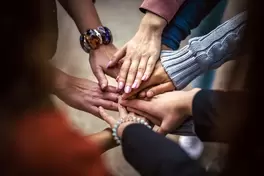 Anna: It’s so important to build teams where members have varied expertise and professional training when working together on practice transformation. How have you incorporated academic detailing strategies into the work being done at Synergy, and how has it been received? Andrew: Some of the academic detailing work I’ve done has been with providers who need extra support from a peer, or from someone else working in the field. When it comes to opioids, chronic pain, and addictions in primary care, there’s a tremendous amount of stigma and information that was accurate at one time, but as we’ve shifted as a society, many primary care providers are yet to catch up. Stigma isn’t something that folks are actively choosing, it’s more of what they’ve been taught. Changing that culture of practice is much more difficult compared to asking prescribers to prescribe cholesterol-lowering therapy. There’s very little societal baggage when it comes to improving cholesterol than there is when it comes to destigmatizing addictions or chronic pain.  Nadejda: We use the same fundamental approach when working with systems, clinics, or individuals. We start with a needs assessment, provide a group training based on those needs, and follow that up with 1:1 academic detailing visits to address barriers, provide materials, and explore personal bias that may be getting in the way of providing treatment. I’m currently working to schedule a training for several providers in a rural county in Oregon. A number of those providers are X waivered (allowing them to prescribe medication therapy for patients with opioid use disorder), but they aren’t using their X waivers to prescribe buprenorphine. A needs assessment will provide me with a better understanding of what the challenges and barriers are, what is working well, and where there may be bias, stigma, or gaps in knowledge. We also use the needs assessment as a “listening session” that creates a sense of safety, fosters an experience that participants are being heard, and serves to “normalize” experiences across settings and practitioners. This process is also strategic in that it helps us understand where to focus our educational outreach and academic detailing efforts. The more we are doing this work, the more we are finding that this approach is effective in getting care teams, medical providers, and service providers across many sectors into increased “philosophical alignment” which is critical to effectively foster culture change around issues of pain, addiction, and trauma.  Anna: Bias, stigma, and gaps in knowledge around chronic pain and addiction are common, especially in primary care. We’ve found that many detailers have been successful in helping providers “catch up” to society and overcome personal bias through their detailing visits. Speaking of detailing visits, face-to-face visits have clearly been impacted by COVID-19. Can you tell us more about other ways that COVID-19 has impacted the work at Synergy? Nadejda: Again, we’ve gone back to the wisdom of the original academic detailing model. The needs of each setting have changed significantly, and we’ve been pivoting our work to meet those needs. Providers want to know how to best support their patients who are dealing with pain during this time. One thing we were able to provide early in the pandemic was a list of recommendations and resources around pain management for both providers and patients.  Andrew: We saw the need to adapt to massive changes related to COVID-19, and to do so essentially overnight. We’ve had questions about conducting urine drug screenings, initiating treatment over the phone, and maintaining the patient-clinician relationship. There’s also a shared vulnerability among providers and patients when visits are conducted virtually. Our patients have had requests for increased medication use, which is understandable because they’re not able to do activities that they’ve typically been able to do to keep themselves resilient. That conversation is a difficult one - in some ways it is easier because you don’t have to see someone in person, but it also makes for a very ineffective conversation because you’re not able to demonstrate your humanity through body language. Our team is struggling to wrap our head around this as we try to provide leadership and guide clinicians who are looking to us, or our state, for collective ideas around this field and how we practice.  Anna: COVID-19 has certainly impacted the way we think about responding to changing needs for those who are trying to manage their pain. Can you tell us about some of the other major changes you’ve seen in pain management over the past few years? Andrew: The biggest thing I’ve seen is insurance expansion. We’ve known for years what you need to have effective pain management and how important it is to shift the idea of living with pain and accepting pain versus eliminating pain. We’ve seen Medicaid expansion and expansion of benefits, especially in the Northwest, that has given patients access to modalities that are effective for safer pain management. Historically, things we knew that worked like, gym memberships, physical therapy, occupational therapy, mindfulness, and chronic pain groups, were never paid for or weren’t available. As society has changed how it believes pain should be managed, we’ve started to see the insurance side supporting these modalities more. There’s also been heavy reporting on the opioid crisis in the media that has led patients to understand that opioids have risks. Nadejda: We’ve continued to grow and learn as a team over the past several years. Our entry point into communication around chronic pain and pain management has continued to be centered around assessing if patients and their care teams have an understanding about how pain works. We want to make sure that clinicians have the proper training and are up-to-date on evidence and resources. Andrew: We’ve known some of this information about pain management and how pain works for a while, but it takes many years to take what we know from as a research perspective and translate it into practice. One of our roles at Synergy is to accelerate that. We’re seeing our evolution as a group mimic and reflect the experience we’re having as a culture as we start to dial in to the most effective ways to manage pain.  Anna: As Synergy continues to respond to changing societal needs around pain management, what insights can you share about the impact of academic detailing to date? Andrew: One thing I’ve learned about academic detailing is that it’s only as effective as your intervention across an entire system. I’ve realized that any work that I’m doing is irrelevant unless I’m addressing the entire system and the culture. If the front desk staff isn’t on board, if the medical assistant isn’t a believer, if the nurse doesn’t understand addiction, if the CEO doesn’t understand that the health system is already treating these patients, there will be challenges that will be harder to overcome. Nadejda: Because academic detailing has been an arm of a larger change approach we’re using, it’s hard to measure its effects. We don’t have data to show that only detailing has moved the needle around these topics in these ways. Sometimes I see academic detailing as the “cherry on top” after there’s a lot of work that’s been done in prepping a system. I’ve recently been doing practice facilitation work with providers and clinics just to understand the barriers in a system—there’s an art to the change process in the pain management space. Academic detailing comes in after you’ve truly understood what the barriers are. After you understand the barriers, you can bring in nuggets of evidence and information in a way that the system is ready to receive.  Biography. Nadejda Razi-Robertson is the Managing Director of Synergy Health Consulting, as well as Synergy’s project lead for the Oregon Health Authority’s Prescription Drug Overdose Prevention Project. Nadejda is a practice facilitator within health systems around the State of Oregon and provides technical assistance to clinics that are focusing QI efforts around safe opiate prescribing, MAT program development, and behavioral health integration. Over the past twelve years, she has worked in private practice with a specialty in trauma treatment, as a behavioral health provider in two Federally Qualified Health Centers (FQHCs), and as a consultant with Oregon’s Coordinated Care Organizations (CCOs) and the Oregon Health Authority supporting efforts in addressing the opioid epidemic throughout the state of Oregon. 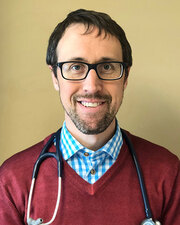 Biography. Dr. Andrew Suchocki is a family physician with additional training in Preventive Medicine. He has worked in underserved medicine with a focus on chronic pain and addiction for ten years, and has been a medical director at an FQHC in the Portland, Oregon region for the past five. Andrew provides educational outreach and consultation in the areas of system change in primary care around opiate prescribing, MAT system design and capacity growth, coordinated specialty care, and reducing risk. Dr. Suchocki is an Oregon Opioid Prescribing Guidelines Task Force member and Oregon Medical Board consultant. He provides technical support and academic detailing for the Oregon Psychiatric Assistance Line (OPAL) which provides immediate referral sources for primary care. Dr. Suchocki also provides strategic planning, creation of innovative clinical decision support tools, physician mentoring, and health system process mapping for Yamhill County Health and Human Services, Community Corrections and Specialty Behavioral Health. He is a regular presenter at national and international pain related conferences. An interview with Brandon Mizroch, MD, MBBS, Provider Network Supervisor, Louisiana Department of Health by Anna Morgan, RN, BSN, MPH, NaRCAD Program Manager Tags: Hepatitis C, HIV/AIDS, PrEP, Rural AD Programs, Sexual Health, Stigma, Training  Dr. Mizroch participating in a NaRCAD training Dr. Mizroch participating in a NaRCAD training NaRCAD: Thanks for chatting with us today, Brandon! We’re excited to be catching up with you. Can you tell us about your program at the Louisiana Department of Health and the work you’re currently doing? Brandon: Absolutely. I was hired to do work around PrEP and PEP, detailing providers across the state of Louisiana, in 2017. Since then, my role has expanded and I promote education for providers about syphilis, congenital syphilis, and Hepatitis C. Our department now has 3 detailers, including myself. Louisiana became the first state in the country to undergo an incredibly revolutionary Hepatitis C Elimination Plan, which has caused my detailing focus to shift. There’s been huge advancements in the drugs that treat Hepatitis C, but they’ve been inaccessible to much of the population due to cost. We negotiated a fixed rate price for Hepatitis C treatment and can now treat 100% of the population, compared to the 3% of the population we could treat previously. There’s been a big push to identify and train providers who’ve never previously treated patients with Hepatitis C. I’ve been leading the charge by getting the word out, running symposiums, and working with the marketing team that’s creating our statewide campaign.  NaRCAD: Wow, that sounds like innovative and exciting work. Can you explain your program’s approach a bit more? Brandon: I try to blend a few different approaches together. I attended the NaRCAD training during my first year as a detailer. NaRCAD built the foundation of detailing for me. I always use the NaRCAD methodology to get my foot in the door and identify providers who can be champions within their practices. I find it much easier to follow up and do longer didactic sessions about complex clinical topics when I use the techniques of academic detailing during my first face-to-face visits with providers. I connect with about 20 providers in this 1:1 model each month. I also work with residency programs, hospital systems, and present at Grand Rounds to expand my reach. There’ve even been instances where I’ve attended dinners for physicians that are hosted by pharmaceutical companies to network and identify new clinics that would benefit from detailing. NaRCAD: We’re happy to see that you’re blending academic detailing with other approaches. Do you provide follow-up to providers after your visits? Brandon: Follow-up is incredibly important, no matter what approach is being used. I like to send an email after each visit that includes digital resources for both providers and patients. I also offer providers the ability to call, text, or email me because of the apprehension that exists around topics where the knowledge base is still growing. Maintaining relationships with providers also ensures that we have a strong provider network that we can continue to educate on other clinical topics down the road.  NaRCAD: Building a connection with providers is imperative, especially as you move into different clinical topics. Your program spans the entire state. Do you find that there’s a difference when you provide clinical outreach education in rural vs. urban communities? Brandon: Yes, there’s certainly a difference. The providers in urban areas tend to have a higher knowledge base when it comes to PrEP and syphilis, perhaps due to marketing efforts or higher patient loads. This makes starting the conversation a bit easier. Additionally, urban communities have access to navigators, who help with non-medical aspects, like transportation issues, lack of health insurance, and long commute times that all prevent folks from getting the treatment they need. Providers in urban areas are also busier and easily distracted during 1:1 visits, which can make detailing a bit difficult. On the other hand, rural communities are quite the opposite. Providers tend to have more time in their schedules and are excited to sit down with somebody from the state office. They’re eager to learn, but there’s typically less of a knowledge base, making it slightly more difficult to start the conversation. I’ve also learned about patient barriers as well, which affect access and provider care. Patients in rural areas are often friends or family with those throughout the community, including those who work at clinics. The notion that you would know the receptionist or provider at a clinic is enough to deter folks from seeking medical care around a topic like sexual health. To encourage access, our state has created a TelePrEP program that offers PrEP services to anyone via telemedicine. Consultations take place over the phone, labs are obtained at third party lab companies, and medications are mailed right to the front doors of patients. It was originally created to help folks in rural communities who face stigma-related barriers, but we’ve expanded the program across the entire state of Louisiana. It’s a great referral service that I can share with providers.  NaRCAD: It’s wonderful that you’re able to identify these challenges and have resources and tools to address them. What’s one piece of advice you’d give to folks who are detailing on a similar clinical topic or have a large geographical region to cover? Brandon: It’s important to have several different ways of presenting information to the providers you’re detailing and to use varied approaches depending on the barrier(s) they’re facing. I typically focus on emotional connection, financial concerns, and the evidence and science behind the key messages I’m delivering. I’m also ready for provider resistance, and am prepared to address it, which is something I learned from NaRCAD. When it comes to detailing over a large and diverse geography, it’s always necessary to plan ahead. My general rule of thumb is that however many hours it takes to drive to a location, that’s how many providers I want to meet with while I’m there. I typically try to use larger educational events, like meetings with clinics over lunch, as my anchor point for longer trips. After I have that scheduled, I search for smaller clinics around the area where I can meet with providers 1:1. It’s all about maximizing your time.  Biography. Brandon Mizroch received his MD/MBBS from the University of Queensland/Ochsner Clinical School Program in November of 2016. Since taking over as the PEP/PrEP Provider Outreach Specialist at the Louisiana Department of Health in August, 2017, he has worked with hundreds of doctors statewide on HIV prevention best practice. Since then he has expanded his educational base and now serves as the head of the academic detailing department at the Louisiana Department of Health, Office of Public Health, STD/HIV/Hepatitis program. As the Provider Network Supervisor he has helped lead the provider Outreach for the state’s first-in-the-nation Hepatitis C Elimination program. From grand rounds presentations at LSU-Shreveport Hospital and Baton Rouge General, to state-wide symposia and conferences, to one-on-one counseling encounters at dozens of clinics all over Louisiana, he has helped spread awareness and education on HIV prevention, syphilis screening and treatment, and HCV screening and treatment through evidence-based care. An interview with Dr. Rosemarie Parks, District Health Director, Ware County Public Health Department OVERVIEW: Ware County, Georgia, was one of 2 sites selected for year 2 of a pilot program of the CDC (Centers for Disease Control and Prevention), NACCHO (the National Association of County and City Health Officials), and our team at NaRCAD (The National Resource Center for Academic Detailing). This exciting pilot program focused on community-level work with local public health departments to develop customized interventions to reduce opioid overdose and death. Six sites experiencing significant public health problems related to opioids were selected over the two years to be trained in academic detailing; those trained health professionals then conducted 1:1 field visits with front line clinicians to impact behavior around prescribing, treatment referrals, and patient care, all within a rural area. As year 2 comes to a close, we’re showcasing stories from the field. Tags: LOOPR, Opioid Safety, Rural AD Programs, Substance Use 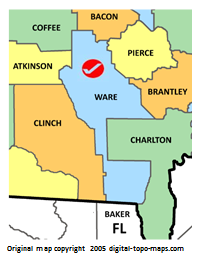 NaRCAD: Thanks so much for joining us to share how your detailing project has gone in Ware County, Georgia, Dr. Parks. Can you talk to us a bit about how the opioid crisis has presented itself in your community? Rosemarie: Our agency serves 16 counties in Southeast Georgia, and we have seen the same things across all of these counties. The opioid crisis affects the community across the board; in every sector. Law enforcement is seeking the effects of this crisis, so is healthcare, and people that work with children and families. They all acknowledge that they’re seeing it in their day-to-day work. So many public health topics only affect one sector, but this opioid crisis affects them all. NaRCAD: With it affecting so many, did you think the strategy of academic detailing would lend itself to improving patient health in response to the opioid crisis in Ware County? Rosemarie: Being a clinician myself, I did initially see how academic detailing would be a good public health intervention. I thought academic detailing would make the lives of providers better by providing them with evidence-based information and resources. As we discussed during the training with NaRCAD, there’s so much information out there, and it’s really difficult to sort through all of it.  In public health, we’re facilitators, data people, and information sharers. I really believed AD would work when I saw the statistics about Ware County during the 2-day training. Ware County is the highest prescribing county in the state, and the 12th highest prescribing county in the nation. Those statistics are eye-opening, and I believed that would make detailing successful in Ware County by raising awareness of how the opioid crisis is impacting our own community. NaRCAD: You mentioned being a clinician—you’re also the Public Health Director for your district. How does being both a clinician and the Public Health Director make it easier for you to be successful as a detailer? Rosemarie: My position allowed me to easily make appointments, and I did not have difficulties getting in the door, like so many other detailers do. I often had visits that were a lot longer than the usual 15 minutes, because clinicians would set aside more time to talk to me. My clinical experience as a primary care physician in private practice for many years made is so that I could relate to the clinicians, and allowed for more honest sharing. I would tell other doctors what worked and didn’t work for my practice, and that made them more comfortable opening up about their own experiences.  NaRCAD: That’s excellent—this is an example of how pre-existing relationships and a fusion of both experience in clinical care as well as public health can really merge to encourage change. What else was unique about your detailing experience? Rosemarie: Another thing that was unique in Ware County is we did both 1:1 visits, as the original model suggests, as well as group visits. There were many occasions upon which multiple providers and key leadership from a health system were all together in one room. This allowed providers to hear from other providers, and I saw that as a critical dynamic. The conversations continued well after those visits ended, and still continue to this day. It was also important that key leadership was present because they heard exactly how the issue is impacting clinicians and patients, and they have the power to make decisions affecting opioids in their health system. NaRCAD: It’s great to hear that a group education approach worked so well. What would you say has been the most impactful piece of this intervention? Rosemarie: I think academic detailing for the opioid crisis worked so well in Ware County because public health is seen as a neutral entity, and because of that, we were able to effectively facilitate these discussions. We do a lot of work in the healthcare community but it is rare that the public health department takes the time to visit an individual practice or provider. During my visits, I witnessed clinicians take in the data about how Ware is one of the highest prescribing counties in the nation, and saw how it immediately encouraged them to want to make a change.  After answering initial questions about where the data came from, clinicians were open to discussing things in more detail, and were consistent in enacting the CDC’s opioid stewardship recommendations, especially consistently using the PDMP. It also gave clinicians the opportunity to express concerns and challenges they face in their daily practices. NaRCAD: We’re so glad academic detailing has been impactful in your community. What has the greatest challenge been with implementing a successful academic detailing intervention to improve opioid safety in Ware County? Rosemarie: The overall experience has been fantastic. As we discussed, the providers were really open and honest. For me personally, as a detailer, it was difficult not to feel like I needed to be the one who had all the answers. I handled this by being a link to information, rather than having all of the information myself. For instance, when a clinician asked a question, or requested a resource I didn’t know about, I’d say something along the lines of, “Let me do some research about that, and when I come back I’ll be sure to have that information.” It helped when I was able to give the disclaimer that “I’m by no means the expert, but I’ve learned a tremendous amount about opioids and the crisis, and I’m here to share some of that information with you. And if I don’t know the answer to something, I can find someone who does.” 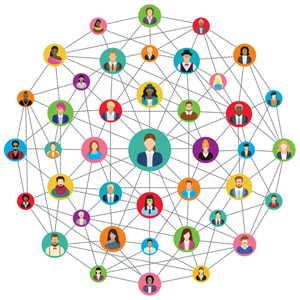 NaRCAD: That’s a great way to handle that kind of situation, and academic detailers are indeed the connector to resources, and certainly don’t need to know all of the answers. Well-handled! And speaking of not knowing all the answers, what is something you wish you knew prior to joining the LOOPR Academic Detailing project? Rosemarie: Personally, there were no big surprises. Everyone did a great job in explanting the process, executing the training, and providing resources. Like anything though, you don’t really get the hang of it until you get those first few visits under your belt and become more comfortable. Overall, this has been a great experience. It was so helpful having additional resources, learning from people that are highly knowledgeable and respected in this field, and being able to share experiences across all LOOPR sites with other detailers who are doing the same work.  Biography. Dr. Rosemarie D. Parks serves as the District Health Director for the Southeast Health District (District 9-2, Waycross, GA). She has overseen the 16 county health departments, 3 wellness clinics, and over 50 programs since moving to rural Georgia from Ohio in 2005. Dr. Parks holds a Master of Public Health degree from Youngstown State University, Ohio, and a Medical Doctorate from the Northeastern Ohio Universities College of Medicine. She is board certified in internal medicine. She is also a member of the National Association of County and City Health Officials. As the District Health Director for the past 14 years, Dr. Parks has overseen telemedicine and teledentistry projects that have expanded new technology to meet the ever-growing needs of a rural population. She has also worked diligently with community partners in planning to combat the opioid epidemic and strategized for innovative solutions to meet the public health needs of the community. OVERVIEW: Boone County, West Virginia was one of 4 original site selected for years 1 + 2 of a pilot program of the CDC (Centers for Disease Control and Prevention), NACCHO (the National Association of County and City Health Officials), and our team at NaRCAD (The National Resource Center for Academic Detailing). This exciting pilot program focused on community-level work with local public health departments to develop customized interventions to reduce opioid overdose and death. Six sites experiencing significant public health problems related to opioids were selected over the two years to be trained in academic detailing; those trained health professionals then conducted 1:1 field visits with front line clinicians to impact behavior around prescribing, treatment referrals, and patient care, all within a rural area. As year 2 comes to a close, we’re showcasing stories from the field. Tags: Detailing Visits, LOOPR, Opioid Safety, Program Management, Rural AD Programs  Via NaRCAD, NACCHO, & the CDC’s pilot project, “LOOPR”, we were able to connect with high-burden counties across the U.S. whose rates of high prescribing and high fatal and non-fatal overdoses identified them as a county in need of support. NaRCAD worked on the implementation of an academic detailing initiative over the course of 2017-2019 with Boone County, located in rural West Virginia. Boone County ranks as the 22nd most vulnerable county across all counties in the United States, with the highest drug overdose mortality rate of all counties in West Virginia. Due to these and other data, Boone was identified as a key county in which to test the implementation of an academic detailing program, in which trained detailers would speak to clinicians and pharmacists about safer prescribing of opioids, checking the state’s prescription drug monitoring program to avoid dangerous co-prescribing of opioids and benzodiazepines, and to try and provide treatment, non-opioid therapy, and resources to patients in need.  One of the most unique approaches across all 5 sites of the LOOPR Project was carried out in Boone, with the team of 5 detailers being hand-selected from the nearby University of Charleston West Virginia’s School of Pharmacy. Four of these five recruited detailers were students in training to become pharmacists; one detailer works at the university as a professor of pharmacy. Selecting pharmacy students and faculty allowed for many positive approaches to the project, as well as creating unforeseen challenges. Programs considering hiring student detailers can often rely on the flexibility of students’ schedules, as well as an enthusiasm and energy for learning that may exist in smaller quantities later in one’s career, when full-time roles in healthcare take priority. While many career-established clinicians may have little room in their schedules to squeeze in 1:1 sessions with fellow clinicians, students may have more of an ability to shift their schedules, especially if they are not yet carrying out residency.  a reflections from Boone County’s Detailing Team, it’s clear that best practices in detailing should also consider the vast amounts of new information that students are absorbing early in their learning careers, and that learning clinical content may take longer to grasp. In addition, the comfort level with new clinical information may lead to less confidence in discussing best practices, especially with clinicians whose careers are much more established. Finding the right balance of tenacity, communications savvy, more time to ramp up to comfort in delivering and leading 1:1 sessions, an additional amount of technical assistance provided at more frequent intervals, and additional practice time or shadowing time with a mentor, can all benefit student detailers who are training to join a clinical outreach education team in a high burden area. With these elements in place, a student detailer may be poised for success—however, other considerations include the fact that students may have new projects, graduation pending, or life events which may end up limiting their ability to dedicate consistent time to a project rolled out over many months.  Other reflections from the Boone County AD Team included looking carefully at the social climate in which AD interventions of this nature may be implemented. While no county is free of potential clinician-level or community-level stigma, particularly around issues such as opioid use disorder, Boone’s AD team shared a particularly challenging setting within which the local community was not as supportive of evidence-based harm reduction initiatives as would be beneficial. One detailer’s suggestion to raise the visibility of and advocacy for harm reduction included considering a public health campaign prior to a detailing campaign, to ensure that subsequent roll-out of detailing is more sustainable and met with an openness from clinicians to consider behavior change. NaRCAD’s work with the public health department in Boone County, in partnership with the students and faculty of University of Charleston, West Virginia, provided the kinds of insights critical to learning from a pilot project of this nature. As with many pilot studies, any information gathered can illustrate a clearer picture of the landscape within which public health initiatives can be implemented, so that future projects may have a greater impact. With many thanks to the student and faculty team of Boone County’s Academic Detailing Project team, we and our partners are grateful to have learned so much over the past two years. An Interview with Lutricia Woods, RN OVERVIEW: Bell County, Kentucky was one of 4 original sites selected for years 1 + 2 of a pilot program of the CDC (Centers for Disease Control and Prevention), NACCHO (the National Association of County and City Health Officials), and our team at NaRCAD (The National Resource Center for Academic Detailing). This exciting pilot program focused on community-level work with local public health departments to develop customized interventions to reduce opioid overdose and death. Six sites experiencing significant public health problems related to opioids were selected over the two years to be trained in academic detailing; those trained health professionals then conducted 1:1 field visits with front line clinicians to impact behavior around prescribing, treatment referrals, and patient care, all within a rural area. As year 2 comes to a close, we’re showcasing stories from the field. Tags: Detailing Visits, LOOPR, Opioid Safety, Rural AD Programs, Substance Use 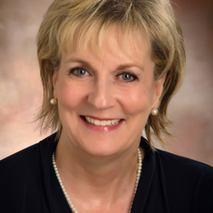 NaRCAD: Hi Lutricia, thanks so much for taking the time to speak with us about your work as an academic detailer for the opioid crisis in your community. Can you talk to us about how the opioid crisis has presented itself in Bell County, Kentucky? Lutricia: There’s not a family in this community that hasn’t been touched by the opioid crisis in some way. Twenty years ago, I worked in hospitals as an RN discharging patients and providing them with their prescriptions as they prepared to go home. At the time, I was shocked at the rates of prescriptions of opioids with benzodiazepines, and patients thinking it was safe. From my perspective, in our community, the opioid crisis really began by doctors beginning to prescribe many opioids to their patients without education or an understanding of the dangers. Three years ago, I was working on a project at a middle school, and was surprised by the number of grandparents that were raising their grandchildren because their children were either in jail, or otherwise affected by opioid use disorder [OUD]. In Bell County, we also have so many people unable to find a job because they cannot pass a drug test, and once that happens, they return to use because of the stressors of not being able to find a job and pay their bills, and it becomes a challenging cycle to overcome.  NaRCAD: Thanks for sharing your perspective, Lutricia—it can be true that some clinicians don’t see the impact of their role in prescribing opioids, and many times may believe that people who develop an opioid use disorder do so because of a moral failing, rather than seeing it as a medical issue. Did you think 1:1 outreach, provided directly to prescribing clinicians, would lend itself to improving patient health in response to the opioid crisis in this community? Lutricia: I desperately hoped it would. The opioid crisis is very personal to me, as it is to many people in our community. Years ago, my mom had 2 surgeries within 6 months. She had complications from one of those surgeries, and as a result, she was in the hospital for 6 weeks, during which time her care providers did not wean her off of the opioids she took immediately after the surgery. She returned home with prescriptions for opioids at a high dosage, and she developed opioid use disorder. My mother’s doctor, with whom I worked, reached out to have a conversation with me. He told me that I had to be the one to intervene with my mother because she continued requesting more opioids. I conveyed that I wanted her to discontinue taking them, and that he needed to assist us in finding a way to do this, as I felt his prescribing without discussing safety caused the initial issue. His response was that he wanted to “keep her happy.” My mother struggled for the rest of her life; she was able to completely wean off and discontinue using them, but it required a lot of counseling. As a result of this experience, I became a drug education coordinator, as I really wanted to do my part to mend the opioid crisis by providing drug education for every student in the county. And then, of course, I became an academic detailer for this project over the course of the past 2 years, which involves clinician education about safety and risk of opioid prescribing.  NaRCAD: Thank you for sharing that Lutricia; the opioid crisis is personal to so many of us. What would you say has been the most impactful piece of this academic detailing intervention as you went into the field and spoke with clinicians? Lutricia: The most impactful piece has been the ways in which we’re trying to hold clinicians accountable for their roles in the crisis, as well as leveraging their ability to improve things based on their relationships with their patients. For many of the doctors and nurses I met with, our conversations and educational resources have made them more thoughtful and intentional about their role. They seem to realize more that they have the power to decrease the number of prescriptions they write, the length of time for which they write them, and talk more with their patients about safety. NaRCAD: That’s fantastic. What about the most challenging part of this project—what’s been hardest about meeting with clinicians to talk about the opioid crisis in Bell County? Lutricia: Getting an appointment to go in and meet with these clinicians has been so frustrating and challenging. I always say that the receptionists in doctors’ offices are the most powerful people in the world. If you can’t get through them, you’re not going to get what you need, and it is the same with the patients. I couldn’t even get in to see my husband’s doctor, who we’ve known since we were kids. My husband had an appointment, so I resorted to going with him, and did a detailing visit on the spot with his doctor. This same doctor ended up changing practices, and it’s been a lot easier to get into that practice—all because of the office manager. Those relationships are important.  NaRCAD: Getting in the door is definitely a consistent challenge across many programs. We’ve heard from other detailers that practice makes perfect, and sometimes it’s easier to gain access when you actually show up and request a meeting in person. What else did you learn after being in the field? Lutricia: When I was “volun-told” that I would be attending a training, and doing “academic detailing”, I didn’t truly understand what it was or what the impact would be. I’m a big picture person, and I couldn’t see the big picture at all; I went into that training not knowing what to expect. It wasn’t until I actually started making visits that I could start to see the seeds we were planting to begin to have an impact. Share your thoughts on this piece in the comments section below, or learn more about the LOOPR project and other opioid safety academic detailing initiatives here and on our Detailing Directory. Moving Beyond Skepticism: Partnerships to Improve Health Outcomes in St. Francois County, Missouri7/24/2019 An Interview with Amber Elliot, BSN, RN, Assistant Director, St. Francois County Health Center St. Francois County, Missouri was one of two sites selected for year 2 of a pilot program of the CDC (Centers for Disease Control and Prevention), NACCHO (the National Association of County and City Health Officials), and NaRCAD (The National Resource Center for Academic Detailing). This exciting pilot program focused on community-level work with local public health departments to develop customized interventions to reduce opioid overdose and death. Six sites experiencing significant public health problems related to opioids were selected over the two years to be trained in academic detailing; those trained health professionals then conducted 1:1 field visits with front line clinicians to impact behavior around prescribing, treatment referrals, and patient care, all within a rural area. As year 2 comes to a close, we’re showcasing stories from the field. Tags: LOOPR, Opioid Safety, Program Management, Rural AD Programs  Bureau of Vital Statistics, Missouri Department of Health and Senior Services Bureau of Vital Statistics, Missouri Department of Health and Senior Services NaRCAD: Thanks for joining us to talk about academic detailing in St. Francois, Amber. Let’s start the conversation with some background information about your county. How has the opioid crisis presented itself in your community? Amber: As with many other places, St. Francois County has certainly felt the impact from the opioid crisis. We have high rates of overdoses and over-prescribing. There have also been more children in foster homes because their parents have an opioid use disorder, as well as increasing drug arrest rates. Many aspects of our community have been affected in some way or another. I think this is the main reason why so many community agencies have come together to start working on this issue.  NaRCAD: Why did you think the strategy of academic detailing would lend itself to improving patient health in response to the opioid crisis in your community? Amber: Academic detailing is a great strategy to reach out directly to clinicians in their offices in order to provide resources and supportive education without punitive actions. We really weren’t sure what to expect with having two nurse practitioners, two registered nurses, and a pharmacist carrying out the 1:1 detailing visits. Health Center administration and detailers were skeptical of how physicians would react to other disciplines “telling them how to do their job”. However, academic detailing isn’t telling them what to do, it’s talking with them about what they can do to keep their patients safe. It is a partnership. Missouri is the only state without a statewide PDMP. St. Francois County passed an ordinance to join the St. Louis County voluntary PDMP in 2017. The first report from the PDMP showed St. Francois County as the highest prescribing county in the state. This was a big concern for the Local Board of Health and, we learned from community partners, the citizens of St. Francois County. Health Center administration has presented opioid-related health data for the county at various meeting and kept hearing from partners that clinician outreach education and patient education were top priorities when it came to prescription opioids.  NaRCAD: So, it sounds like it’s been a success so far. What would you say has been the most impactful piece of this intervention? Amber: The greatest success of academic detailing in St. Francois County so far has been the willingness of most physicians to start the conversation about how they can improve prescribing patterns, and care of patients at risk for or experiencing opioid use disorder (OUD). Also, many physicians have started using the PDMP regularly as a result of our academic detailing visits. NaRCAD: That’s excellent news and shows the impact that 1:1 education can have! Over the course of this pilot project these past 4 months, what has the greatest challenge been with implementing a successful academic detailing intervention to improve opioid safety in St. Francois? Amber: The challenge are the providers who do not want to talk with the detailers, or the ones who flat out refuse to change their prescribing patterns. As a nurse, this is frustrating to me because I believe in quality, evidence-based healthcare for all. The refusal to learn, or seek to learn, new information about medications that are prescribed daily is poor patient care and our citizens deserve better than that.  NaRCAD: That does sound frustrating! During our 2-day training, we really emphasis the importance of asking open-ended questions to draw clinicians out. However, there will always be some clinicians who will not engage, no matter how great of a detailer you are. Victoria Adewumi from the original cohort of LOOPR detailers discussed that in a prior blog post. What is something you wish you knew prior to joining the LOOPR Academic Detailing project? Amber: I wish I’d known more about choosing detailers. Recruitment is important. When recruiting detailers, it is more important to make sure to recruit people who have the bandwidth to do the detailing, rather than making sure they have the perfect clinical background. It may be a good idea to create a formalized agreement to ensure they completed their required detailing visits. NaRCAD: You are spot on, Amber. Recruitment is a complex process. Readers can learn more about this later in the summer when we release our new Implementation Guide to help sites like yours select and hire the right candidates. Readers can read other LOOPR blog interviews here, and stay plugged in for more LOOPR site highlights in the next couple of months.  Biography Amber Elliot, BSN, RN Assistant Director St. Francois County Health Center Amber Elliott is the Assistant Director for the St. Francois County Health Center in Park Hills, MO. She received her Associates Degree in Nursing in 2008 from Mineral Area College to become a Registered Nurse. She went on to obtain her Bachelor’s Degree in Nursing in 2011 from Central Methodist University. She has spent most of her nursing career working in acute settings, primarily hemodialysis. Amber started working in public health four years ago in hopes to make her own community a healthier, safer place to live. Amber has been working on opioid-related activities since 2017. She currently resides in Farmington, MO with her husband and two children. Opening Up the Conversation: An Interview with the Bell County, Kentucky Academic Detailing Program10/26/2018  Featuring: Robin Tuttle, RN, ER Nurse, Academic Detailer, NaRCAD Training Alumnus Interview by Kabaye Diriba, Senior Program Analyst, NACCHO, in partnership with NaRCAD Tags: Detailing Visits, LOOPR, Opioid Safety, Rural AD Programs EDITOR'S NOTE: Bell County, Kentucky, was the first site of four selected for a 2018 pilot program of the CDC (Centers for Disease Control and Prevention), NACCHO (the National Association of City and County Health Officials), and NaRCAD (The National Resource Center for Academic Detailing). This exciting pilot program focused on community-level work with local public health departments to develop customized interventions to reduce opioid overdose and death. Four sites experiencing significant public health problems related to opioids were selected to be trained in academic detailing; those trained health professionals then conducted 1:1 field visits with front line clinicians to impact behavior around prescribing, treatment referrals, and patient care, all within a rural area. As year 1 comes to a close, we’re showcasing successes from the field. Thanks for talking with us about your on this pilot project with NACCHO, the CDC, and NaRCAD, working to support local efforts in your community. Robin: What we’ve been doing has been a breath of fresh air! I'm proud to be a part of it, and happy to help in any way that I can. Tell us how local detailers were selected for this project—what kinds of professional backgrounds make up your diverse team members? Robin: I was asked by a co-worker, another detailer, who thought “I know this really outgoing, outspoken person that might fit the team.” Our team is made up of people that have hands-on knowledge about the opioid epidemic. I’ve been in healthcare since 1988 and I’ve been living here in Bell County for 30 years. I started working as a nurse aid at one of the local hospitals and then went on to college to get my RN. Our detailing team all had a common interest when we got together.  What elements of the training do you apply most often during your visits when delivering your key messages? Robin: What helped me the most was that last day of training when we were practicing academic detailing. Asking open-ended questions is the most important thing. You get so wrapped up in wanting to deliver your messages, but it’s not necessary that you get all of your messages in on that first visit. You may feel rushed to deliver all your messages if you’re afraid you’re not going to make it back in the door, but what I found is the more I met with doctors, and the more I said things like, “What have you seen in your practice?” or “Tell me about a patient…” or “Talk to me about the problems you’re having…”, the more I saw the conversation open up. That’s something I really picked up on the second day of training—learning to turn it back around and asking [needs assessment] questions. Let them get involved, and let me really listen to what they have to say; that way it'll help contribute to the conversation going forward. The opioid epidemic can be a sensitive topic. When you approach clinicians to discuss their behaviors around the opioid epidemic, how are you generally received? What do clinicians in Bell County see as major challenges in your community? Robin: Almost everyone I spoke to was very receptive about everything that we talked about, including all 5 of our campaign’s key messages. Because treatment in this area is slim to none, it all circled back to, “What if I find someone [a patient] that has opioid use disorder? How can you help me?” Doctors here are telling me that even people that have overdosed and come to the hospital are having a hard time [getting access to treatment]. There are places that are not in Bell County, but we would need some sort of transportation system that could get patients to those places. 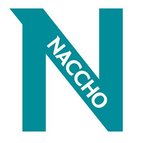 What challenges do Bell County clinicians face, along with being busy, when trying to support their patients who are prescribed opioids? Robin: Clinicians are often challenged in identifying symptoms of someone with opioid use disorder. Also, sometimes patients are sent to a pain [management] clinic, but those don’t always work. In our community, we can send them to the local Suboxone clinic which is accessible and easy to get to. When it comes to Suboxone, you cannot look at it as an “all-or-nothing” approach. That’s a challenge here in Bell County, trying to get the community to know that abstinence is not always the answer, and sometimes people might have to take some form of medication for life to get the wiring back together that they've already lost because of their disorder. I also understand some of the doctors are adamant about their current patients that have been taking these medications for 25 years for this chronic pain, which they don’t think they can do much about, and they’re concerned about this newer generation [of patients] coming in.  What have been some of the more rewarding exchanges you’ve had with clinicians you’ve met with? Robin: I've had a lot of good visits, but this one sticks out in my mind: there was one clinician where I felt immediately like I was going to get the “brush off”. But I ended up staying for an hour and a half! I sat there with this doctor, who I’ve had a challenging professional relationship with historically, and he ended up talking to me at length about patients he was seeing, and those he had inherited. I was so excited that I’d spoken with him for so long, and that I’d covered all 5 of our campaign’s key messages. I walked away from that visit with questions to follow up on that I wanted to be able to answer for him at a future visit, and I felt like I made a new friend. What do you want to tell new detailers who are just starting to form teams and try this kind of 1:1 outreach education model out with clinicians in their communities? What piece of advice would you have appreciated when you started your first detailing visits? Robin: Try not to get discouraged! After we divided up all the physicians, we started making phone calls. That can be discouraging. I found out we actually had more luck stopping by. We called it the “drug representative look”: you dress up, put your badge on that says academic detailer, have the clipboard and all the paperwork, and you look professional. I really found out that I had more luck by just walking in and saying, “Do you have a minute?” Don’t get discouraged if you're making calls all day long and they keep putting you off, because receptionists are making appointments all day long too and it’s hard to explain what you’re doing over the telephone. We definitely felt discouraged during the first couple of weeks of outreach. We were feeling like we hit a brick wall, and that’s when we coined the term "drive-by” detailing visits. We started driving around and just showing up at offices. So, get out and drive if you can’t get through over the phone. Go with a card and introduce yourself. They [clinicians] all want to talk about opioids. You'll be surprised when you get in the room with them and they start talking. Ideas? Comments? Questions? Sound off on this blog in the comments section below!
Director’s Letter: Mike Fischer, MD, MS 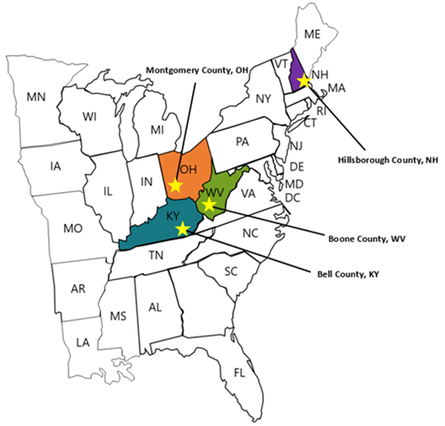 Tags: Director's Letter, LOOPR, Opioid Safety, Rural AD Programs, Training The opioid crisis has been recognized as a major national public health problem, but it actually reflects a collection of many thousands of local crises playing out in individual cities and counties. Each region faces a distinctive set of challenges, driven by economic and social factors, local medical practice patterns, political environment and pressures, and many other considerations. Identifying and implementing effective solutions to address the opioid crisis requires developing an understanding of how these individual challenges interact, and what strategies are most effective in specific situations--one of which is academic detailing.  The NaRCAD team is partnering with the CDC (Centers for Disease Control and Prevention) and NACCHO (the National Association of City and County Health Officials) on an exciting pilot program working with local health officials to develop customized interventions to reduce opioid overdose and death. Four sites experiencing significant public health problems related to opioids were selected: Boone County, Kentucky; Bell County, West Virginia; Manchester, New Hampshire; and Dayton, Ohio. 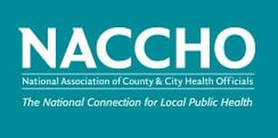 Public health officials at each site identified a wide range of local stakeholders to participate in developing a community action plan and recruited trainees to complete NaRCAD’s academic detailing training course, which we customized to address the unique challenges that each community faces. We also developed a specialized online toolkit for these sites, including discussion boards, local resources, and printable resources.  A trainee from Bell County, Kentucky, delivers a key message. A trainee from Bell County, Kentucky, delivers a key message. We traveled to each site in March and April of this year, facilitating hands-on trainings in the techniques of academic detailing in alignment with the CDC prescribing guidelines. Trainees came from diverse backgrounds, including pharmacists, nurses, public health officials, and students in the health professions, including pharmacy students, dental students, and medical school students. Plans for implementing AD varied by site depending on the local health care environment; some sites focused more heavily on appropriate prescribing of opioids by clinicians, while others prioritized increasing referral rates for patients with opioid use disorder (OUD), including access to medication-assisted treatment (MAT).  Practicing a concise introduction in Manchester, New Hampshire. Practicing a concise introduction in Manchester, New Hampshire. As the AD trainees at each pilot site continue their work in the field, we’ll learn more about how these diverse strategies succeed, and how we can support adaptations to make academic detailing more impactful. This important collaboration has allowed us to form invaluable partnerships with CDC and NACCHO, leveraging national resources to improve local responses to this epidemic through plans that respond more precisely to local needs and priorities. We’re excited for this pilot program to serve as a model for future opioid safety AD interventions, and we’ll be providing updates here on the blog. In the meantime, tell us: what's happening in your local community around the opioid crisis? Sound off in the comments section below, and let us know if you think clinician-facing education could be a strategy that would improve outcomes for your community. And join us for our next training and our terrific annual conference to learn more about this and other exciting AD projects. -Mike  Biography. Michael Fischer, MD, MS | Director of NaRCAD Dr. Fischer is a general internist, pharmacoepidemiologist, and health services researcher. He is an Associate Professor of Medicine at Harvard and a clinically active primary care physician and educator at Brigham & Women’s Hospital. With extensive experience in designing and evaluating interventions to improve medication use, he has published numerous studies demonstrating potential gains from improved prescribing. Read more.  Guest Blogger: Monica Mais, MSN, FNP Family Nurse Practioner/Academic Detailer California Opioid Safety Network, Fairchild Medical Clinic NaRCAD Training Alumnus Tags: Detailing Visits, Opioid Safety, Rural AD Programs, Training In 2011, I went from 15 years as an Emergency Room nurse to a new role as a Family Nurse Practitioner in a rural healthcare setting. I couldn’t believe the amounts of prescribed opioids that were coming out of our little clinic—the average chronic pain patient was receiving 240 Morphine Equivalents/day (MEDs), and many of these patients had been receiving these medications for years without oversight. In 2013 I introduced an evidence-based protocol and policy for safe prescribing of Opiates for Chronic Non-Cancer Pain (CNCP).
However, patients who could not obtain opiates from our clinic quickly moved on to the clinic across town. This influx of opiate seeking patients was reason for concern from those receiving clinics. My colleagues and I opened our doors to neighboring clinics and providers and began sharing our policies and successes. Many other area clinics started adapting our policies to their own practice, reducing their opiate prescribing as well.  We formed a coalition called Siskiyou Against Rx Abuse (SARA), and based on our previous successes, we were all shocked to see data showing our county was among the highest opioid prescriptions per capita in California, and had a high overdose rate per capita, despite our efforts. Clearly, more needed to be done! Our coalition facilitator, Maggie Shepard, RN, along with our medical director, Dr. Sam Rabinowitz, and myself were all invited to attend training to become Academic Detailers in San Francisco with the San Francisco Department of Public Health, a partner with NaRCAD, the National Resource Center for Academic Detailing. We did scripting and role-playing throughout the training, learning the important social marketing and communication skills needed to conduct a personalized visit with a provider where the goal would be to change behaviors to continue to promote safe opioid prescribing, Naloxone, and Buprenorphine out to providers in our area. During the training, I was videotaped during a practice role-play, which was very helpful, as it reminded me to speak more slowly, and to organize my key messages and talking points. After the training, getting our detailing program into the field involved a step-by-step process. Here are important things to consider that have worked well for my detailing process:
I plan to continue AD throughout 2018. I believe we have experiences that we can share to encourage our colleagues to make positive changes in in their prescribing habits. Academic Detailing works due to mutual respect of one another’s experiences, professionalism, and willingness to receive new information—it’s an excellent way to foster change within a system! Biography
Monica Mais, MSN, FNP Family Nurse Practioner/Academic Detailer, Fairchild Medical Clinic Monica Mais is a Board Certified Family Nurse Practitioner working at an FQHC in Siskiyou County, located in far Northern California on the Oregon border. She is a founding member of Siskiyou Against Rx Abuse, member of the California Opioid Safety Network and an X-Waived prescriber, working with chronic pain and opioid dependent patients. As a former Emergency Room Nurse for 15 years, many of Monica’s shifts involved witnessing overdoses, drug-seeking behavior, violence, desperation, and healthcare worker burnout. It had been escalating every year to its current crisis level, and Monica wanted to be part of the solution to this heartbreaking epidemic. Questions on this piece for Monica Mais? Contact her at [email protected], or leave your thoughts in the discussion forum below. This press release originally appeared on publicnow.com and was written by UCSOP. Tags: LOOPR, Opioid Safety, Rural AD Programs, Substance Use, Training The University of Charleston School of Pharmacy (UCSOP) is partnering with the Centers for Disease Control and Prevention (CDC) to pilot the National Resource Center for Academic Detailing (NaRCAD) program at the Boone County Health Department in Southern West Virginia. Academic detailing is a one-on-one outreach education technique which allows pharmacists, pharmacy students and other health care professionals to educate prescribers on the dangers of overprescribing opioids and also recognize the signs of opioid abuse.  UCSOP participants include student pharmacists Angela Withrow (class of 2019), Amy Bateman (class of 2018), Joshua McIntyre (class of 2021), Jami Swift (class of 2021), and assistant professor Dr. Sarah Embrey. These individuals make up five of the seven selected persons being trained for the program. A two-day training will kick-off the program on March 14-15, 2018. 'Participation in this important pilot project is just one more way UCSOP students and faculty work to educate and serve communities throughout West Virginia on opioid use/abuse by sharing best prescribing practices, delivering prevention education, and encouraging recovery and treatment,' said Dr. Susan Gardner Bissett, Assistant Dean for Professional and Student Affairs.  NaRCAD was founded in 2010 and is a national resource center that supports clinical outreach education programs across the United States. The goal through its trainings and program support is for clinical educators to have a greater impact when visiting clinicians and aiding those clinicians on making evidence-based decisions. Interventions supported include reducing opioid abuse, HIV/STI screening and prevention, prenatal health, smoking cessation, chronic disease management, and more. For more information, visit https://www.narcad.org/.  The NaRCAD Team Tags: Cardiovascular Health, Conference, HIV/AIDS, Rural AD Programs This year's 5th International Conference on Academic Detailing, held in Boston on November 6th & 7th, 2017, brought our programming to new heights. We were inspired by the high levels of interactivity woven into the two days of programming, ranging from live polling during expert panels to critical dialogue about dealing with stigma in the face of the opioid crisis. We heard from various AD practitioners across the United States and Canada, with an emphasis on improving health outcomes for patients dealing with risk of heart failure, those living with chronic diseases such as COPD and diabetes, and prevention for those at high risk of contracting HIV. Our sessions were diverse in terms of content as well as geographic representation--we learned from clinical education experts about the specific challenges of detailing in rural areas, as well as from those whose role was to support detailers in the field by creating dynamic, engaging, and cost-effective educational materials. We're grateful to the community of supporters of academic detailing, from those who work full-time in the field to those who are building programs; we were delighted to see old friends who've been attending since our very first conference, as well as to meet folks who are just getting started. If you can believe it, we're already thinking about NaRCAD2018, and we have our community to thank for it--so thank you, for raising the bar this year and bringing innovation, exciting progress, and new energy to our conference series. For those of you who missed out in person, you can enjoy highlights from 2017's program on our conference hub page. We'll be announcing the dates for our 2018 conference in early January 2018, and we'll be opening the process for presentation applications on March 1st, 2018, so check our Conference Series page for both announcements. Whether you choose to present, attend, or tune in via on-demand video and social media, we wish you a happy rest of 2017, and we hope to help your program grow in 2018. See you next year! -The NaRCAD Team Expert Trainer Insight Series, Part 2:An Interview with Amanda Kennedy, PharmD, BCPS, Director of the Vermont Academic Detailing Program Tags: Detailing Visits, Expert Training Insight Series, Rural AD Programs, Training  Dr. Amanda Kennedy & NaRCAD's Dr. Jerry Avorn Dr. Amanda Kennedy & NaRCAD's Dr. Jerry Avorn NaRCAD: Hi, Amanda! We’re looking forward to chatting with you. You’ve been an academic detailer for about 13 or 14 years—tell us about the Vermont program. Amanda: The Vermont Academic Detailing Program was started in 1999, by Amy Jaeger, PharmD. I trained with Dr. Jaeger as a pharmacy resident. When she left Vermont in the early 2000s, she wanted to leave the program to someone who would be passionate about evidence-based prescribing in primary care. So the job was mine! Amy unfortunately passed away unexpectedly in 2005, but her mentoring and passion for patient care has stayed with me, and has forever shaped the way I think about pharmacy and academic detailing. We’ve evolved over time into a more organized program, with a grassroots focus of serving our state’s primary care providers. This commitment to service is how we succeed in building strong relationships with providers over time, and we infuse the spirit of service into all of our sessions.  NaRCAD: What challenges do you face that are specific to being a rural program? Amanda: Our program has been stable, but it's been low budget over time. Despite being a small state, we face many challenges balancing the feasibility of delivering sessions to providers with our rural geography. The evidence-base for academic detailing clearly demonstrates the value of a 1:1 ratio of academic detailer to provider. However, it doesn’t make sense for us to travel 2 hours each way to see one provider only to repeat the process the next day for a second provider within the same practice. So we mostly deliver small group academic detailing sessions, as a way to serve as many providers as possible within our budget. We‘re mindful that “small group” means about 3 prescribers, which matches the types of practices we serve. NaRCAD: Along with being a seasoned academic detailer, you also help us here at NaRCAD to train groups of new detailers at our Boston-based techniques trainings. Can you share some highlights? Amanda: The power of the NaRCAD trainings is in the power of the individuals who attend. Realizing that other people are struggling with the same issues, and trying to address these issues with academic detailing, is so powerful.
 Amanda works 1:1 with a trainee at a 2016 NaRCAD course. Amanda works 1:1 with a trainee at a 2016 NaRCAD course. NaRCAD: What would you tell someone who’s thinking about coming to a future NaRCAD training? Amanda: I'd tell them to have fun with it! This training is a special opportunity to focus on how to best communicate with people around behavior change. It allows one to put aside specific topics and come together in a group to think about how best to deliver complex information. The model applies across topics, allowing people from all types of programs to work towards a common goal. The training is hard work, but so rewarding, and offers the chance to learn and network with other trainees. The best part is that it’s immediately applicable upon returning to your program. NaRCAD: That’s good advice—we agree that learning opportunities should be both challenging and enjoyable. In other news, we heard you recently presented at a U.S. House of Representatives Congressional Briefing. Tell us about that. Amanda: I was invited to present at the briefing entitled, “Getting the Medications Right”: An essential ingredient in achieving the goals of H.R. 4878 – the Medicare Better Care, Lower Cost Act. The briefing was presented by the American College of Clinical Pharmacy and the College of Psychiatric and Neurologic Pharmacists. The purpose of the briefing was to highlight pharmacists as members of the primary care team. I specifically presented some of my Vermont research that involved partnering pharmacists within patient-centered medical homes. It was the perfect opportunity to showcase the innovative work we are doing here in Vermont. I think there was a great response from those who attended and for me personally, it was an absolute honor to be there.
NaRCAD: Thanks so much for taking the time to connect with us, Amanda. We’re delighted to have you as part of our core team of training facilitators, and we’re excited to share what you’re doing in Vermont with our community. Learn more about Amanda Kennedy, or visit our Team Page to learn more about NaRCAD staff. Join Us: NaRCAD's next training is open for registration.
Ask the Expert: Questions for Amanda? Ideas for us? Thoughts on detailing? Share your response in the comment section below for community discussion! |
Highlighting Best PracticesWe highlight what's working in clinical education through interviews, features, event recaps, and guest blogs, offering clinical educators the chance to share successes and lessons learned from around the country & beyond. Search Archives
|
